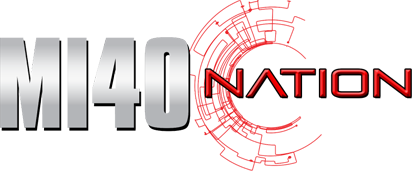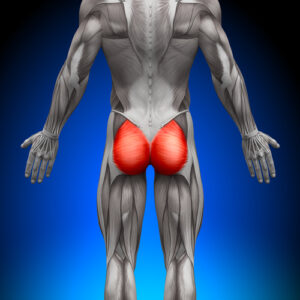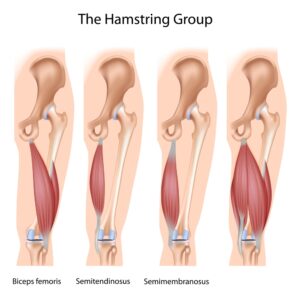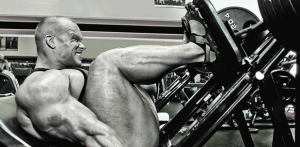Are You Getting Enough Sleep? Why You Should Care!
The hormonal and metabolic processes that occur during sleep The three primary factors to consider for those seeking muscle hypertrophy ...

The hormonal and metabolic processes that occur during sleep The three primary factors to consider for those seeking muscle hypertrophy ...
The old saying, "eat less move more", can actually be a GREAT way to end up 'skinny-fat! If your goal ...
What if I told you there was a starch that increased insulin sensitivity, preserved muscle, and helped burn body fat? ...
Bodybuilders, and indeed all athletes looking to secure the performance edge would have at least a passing knowledge of the ...
A new year has begun and now is the time to carve off that holiday excess. As fans of this ...
Did you know that your body is approximately 90% bacteria and only 10% human? From birth to death, our gut ...
Training arms is so important to the common bodybuilder or fitness enthusiast that there is absolutely no shortage of information ...
Let’s face it – seeking out the right information can be confusing whether you are a bodybuilder or just an ...
Ben's step-by-step guidelines for performing the best chest pressing movements for maximal muscle growth!
Step-by-step instructions for performing the best isolation exercises for building a barn door back!
BPak breaks down the muscle mechanics behind various lat isolation exercises so that you can grow wings!
Want bulging biceps? Here are Ben's top execution tips for packing muscle on those guns!

In preparation for writing this article, I wanted to see what exactly was written out on the web when it came to glute/ham training. What I found was not all too surprising; some write-ups were marred with confusing scientific jargon, of the remainder, the vast majority was irrelevant or even outright incorrect. Some writers suggest that there are even secret, or newly-founded exercises that work like magic. What should be most important when learning certain exercise-related scientific principles is that they need to be directly applicable to be helpful, plus straight-forward to apply. In this article, we will try to uncover only the relevant science as it relates to the already more popular glute/ham exercises, in order to ensure we perform them to their full potential.
 The Anatomy
The Anatomy
The gluteus maximus is without a doubt one of the most powerful muscles in the human body. It originates from the gluteal line, inferior aspect of the lateral crest of the ilium, the posterior/lateral aspect of the sacrum and coccyx, and inserts into the gluteal tuberosity of the posterior femur. Because of its size and superficial location compared the other glute muscles (medius and minimus), it will be the major focus of attention in this article.
The gluteus maximus is a powerful extender of the hip joint as well as an external rotator and adductor.
 The hamstring muscles are a group of four tendon-like muscles that are found in the posterior thigh. Three of them; the semimembranosus, semitendinosus and the long-head of the biceps femoris, cross the hip joint via originating of the inferior aspect of the ischial tuberosity.
The hamstring muscles are a group of four tendon-like muscles that are found in the posterior thigh. Three of them; the semimembranosus, semitendinosus and the long-head of the biceps femoris, cross the hip joint via originating of the inferior aspect of the ischial tuberosity.
The short-head of the biceps femoris lies on the distal end of the femur. All four of the hamstrings cross behind the knee into their respective insertions and therefore act to flex the knee.
All but the short head of the biceps femoris cross the hip and aid in extension as well externally rotate and adduct while in a neutral position.
Because both the hamstrings and gluteus maximus muscles cross the hip, they will be the major contributors to hip extension (along with several others not discussed here). The anatomy and function of the hamstring muscles, which all cross posterior to the knee joint (3 of them crossing the hip), will be altered significant by both knee position and hip position. Understanding these anatomical relationships between the relevant muscles will go a long way to not only performing glute/ham exercises correctly, but also in selecting the appropriate exercises.
Determine Active Range of Motion (AROM) Ability
It should be noted that, maybe more important than with any other muscle group – checking how far your joints can actively move will be critical to reducing spinal and knee injury risk and / or long term wear to your joints. Controlling the eccentric portion of hip extension and pressing exercises so to avoid going beyond what your hips can flex concentrically, will not only reduce injury risk, but enhance muscle contraction. The same can be said for knee flexion exercises like seated leg curls for example, where machines commonly shove the knee and hips into compromised positions. “Full range of motion” should only mean, full range of ‘active’ motion… forcing yourself to go lower than your active range allows when performing deadlifts, leg presses, squats and others, to the point of passive range, will only stress joints and be a long-term detriment to progress.
Hip Extension During Compound Exercises
Before specific hamstring / glute exercises are examined, it should be noted that these muscles can be emphasized or deemphasized strategically during multi-joint pressing movements, normally biased towards quadriceps work.
 Leg Press: Mechanics dictate that foot positioning (from top to bottom) will be critical in how much emphasis in placed on the hamstrings/glutes or the quads. With most 45 degree leg presses, a simple foot positional change (of even fractions of an inch), can alter hamstring activity significantly.
Leg Press: Mechanics dictate that foot positioning (from top to bottom) will be critical in how much emphasis in placed on the hamstrings/glutes or the quads. With most 45 degree leg presses, a simple foot positional change (of even fractions of an inch), can alter hamstring activity significantly.
Altering foot position upward slightly for example can increase hamstring activity as it increases relative motion at the hip compared to the knee. This can be further increased by combining this strategically with downward ‘intent’ (the intent of driving the heels ‘downwards’ in an attempt to increase hip extension activity, while reducing knee extension force (quadriceps).
It should be noted that control (an even slower speed in the beginning) should be a priority when attempting to skew forces towards the hip extensors.
Barbell Back Squats: It’s a little more difficult to influence hamstring/glute activity with these compared to with leg presses given that individuals vary in their mechanics so extensively.
People with long femurs, in contrast to their trunk and tibia length, should ultimately use a stance wider than standard shoulder width in order to increase their ‘foldability’. In this instance, those who keep their stance too narrow tend to collapse too soon, making it nearly impossible to successfully visit the lower portion of the range of motion.
Widening the squat stance in general, using the appropriate outward rotation of the hips, can dramatically alter the load line in favor of the hips relative to the knees, thereby increasing glute and hamstring work dramatically. It will also allow certain individuals to visit deeper ranges while maintaining an upright position.
Smith Machines can also be used to effectively increase hip motion if you wish to further emphasize the glutes and hamstrings, there is no consequence of falling over as there is with a barbell Squat.
Front-Squats of course reduce hip contribution and increase quadriceps activity.
Lunges: These are extremely popular for glute/hamstring work, however, their participation during the movement is never automatic. Before performing any type of lunge, it is imperative that the individual has the medial/lateral hip/leg stability required, rather than taking this exercise for granted. Lacking this stability and single-leg balance can considerably impede progress.
Single leg-abduction exercises, which emphasize the lateral muscles of the hip (glute medius/minimus, tensor-fascia latae), should be a considered a prerequisite to lunges, especially with high loads and acceleration. Foot/Ankle stability ought to be a requirement as well.
Performing ‘Walking Lunges’ with excessive speed and a lack of control (very common) can increase quadricep work via friction forces from landing on the ground. The optimal way to maximize hamstring and gluteus maximus contraction is to consciously stop any forward progression first, before lowering into the movement, while simultaneously driving the hips ‘back’ (modestly) as per a squat and shifting the weight onto the heels (thereby increasing resistance to the hip extensors, rather than the knee extensors solely).
Hip Extension Exercises
Stiff-Legged Deadlifts: This deadlift variation skews the moment of resistance away from the hips, thereby increasing hamstring and glute contraction through the entire range. Traditional deadlifts (which involve a squatting motion) will skew the load line for relatively more quad involvement.
Keeping the knees at least slightly bent throughout the range of motion (though rigid) will effectively reduce unwanted forces on the knees, while allowing the hamstrings to produce more force nearing the bottom of the range. Of course, as with all other lower extremity exercises, eccentric control into hip flexion should be a maintained for optimal contraction. Keeping the barbell near the shins, rather than further away from the body, will produce a far more accommodating resistance profile, also reducing resistance at the trunk (if part of your goal).
As opposed to many other hip extension exercises, stiff-leg deadlifts require less gluteus maximus involvement (comparative to hamstring) as the moment of resistance is reduced to zero at the top of the exercise. Experimenting with lighter loads using a cable stack as a variation, or even bands attached to the bar anteriorly, can change this moment to bring some more resistance to the top of the motion.
Prone Hip/Back Extensions: This exercise is usually overlooked and / or ill-performed as far as accentuating the posterior hip muscles. Perform using a 45 degree version before moving up to the far more difficult 90 degrees version – this exercise can be effective at relatively isolating the glutes and hamstrings with the proper intent. Instead of swinging with the back, applying various types of intent such as, ‘sticking the butt out’ while controlling to the bottom, and, ‘kicking the legs through the leg pad’ while moving concentrically upwards, will stimulate the hams/glutes extensively. Because of the higher resistance (from the weight of trunk/head) at the top of the motion, this movement could stimulate the gluteas maximus potentially far more than any other exercise. Adding varying degrees of knee bend will stimulate the hamstrings more so than a straight leg, while increasing hip range at the very bottom. Like deadlifts, this exercise need to be performed/practiced slowly with control before increasing the weight or speed.
Single-Leg Extension (standing): These are usually performed using a machine, or with cables attached to the feet while extending the hip backwards. The most common error with these exercises involves excessive extension at the spine using spinal erector musculature. Because hip extension range in most individuals is usually between only 5-20 degrees, care should be performed as to not go beyond this range, especially with higher loads or acceleration. Bracing the abdominals like holding a tiny crunch, as to fight against lumbar extension, will effectively limit spinal involvement and keep stress on the glutes.
Glute-Ham Raises: This exercise is far less popular mainly due to its extreme difficulty. Because of the inversion of joint motion during this exercises, the weight of the trunk/legs at the knee can increase joint forces in the knee far beyond some its exercise counterparts. Needless to say, careful assessment and control of this movement should be implemented to effectively reduce risk.
Knee Flexion Exercises
Seated Leg-Curls: This knee flexion movement is considered the least difficult of the hamstring exercises, but it is somewhat challenging to truly isolate the hamstrings with it. Bracing the body into the seat using the arms, while also bracing the abdominals to prevent lumbar extension, can control the anterior pelvic tilt often mistakenly used in this exercise. Adding the intent of hip extension (squeezing the thighs downward) upon initiation of the movement, makes this exercise far more effective for hamstring isolation. Dorsiflexing the ankle (“pointing feet up”) is also another variation to further free the hamstrings by eliminating gastrocnemius tension.
Lying Leg Curls: The prone leg curl is one of the most difficult exercises to manage pelvic control and therefore its execution is often cheated. Because the hamstrings are near maximally shortened at the end of the range of motion, the body will try to tilt the pelvis anteriorly early in the motion. This hip position should be progressed to, only if the less challenging seated version is mastered and less weight is used. Grabbing the handles or hugging the bench (keeping the shoulders and trunk down) while bracing the abs (as to keep the trunk from extending) will keep the butt from rising off the seat in anterior pelvic tilt. Gently intending to squeeze the hamstrings/glutes near the beginning and throughout the motion will counter the tendency of the hips to flex which causes significant tension reduction in the hamstrings.
Standing One-Leg Curl: This exercise should be performed the same as the prone variation, however careful control, as to not rotate the trunk while the lumbar spine tries to extend, should be implemented. This movement is likely the most demanding of the curl variations to execute flawlessly.
Summary
Like training other muscles and joints, particular care should be taken with hamstrings to properly progress through exercise selection (must master easier before harder). Being attentive, as to control hip extension and knee flexion exercises, as well as to not go beyond active range of motion capabilities, will ensure constant tension/challenge while limiting injury risk. There are no magical new exercises to enhance glute/ham development, but perfecting and varying the ones you already perform on leg day will advance your growth to the next level.